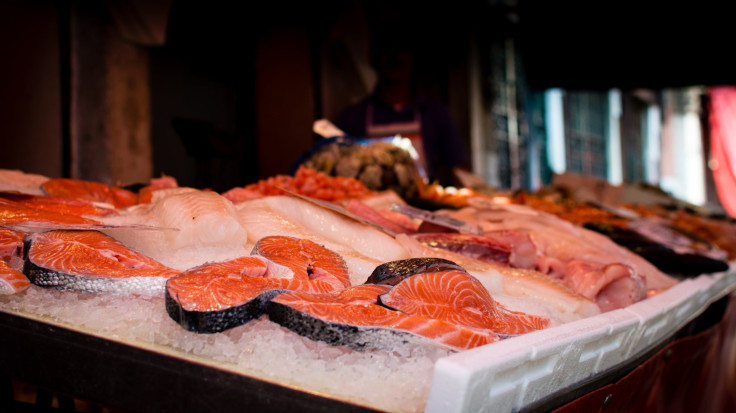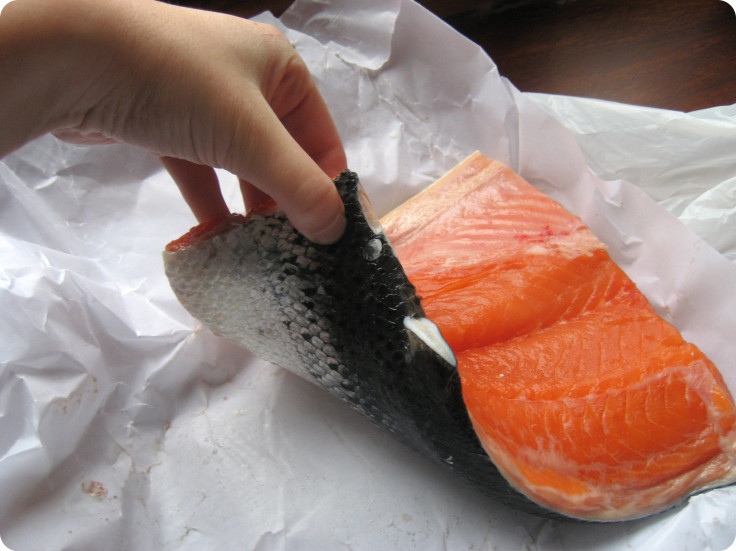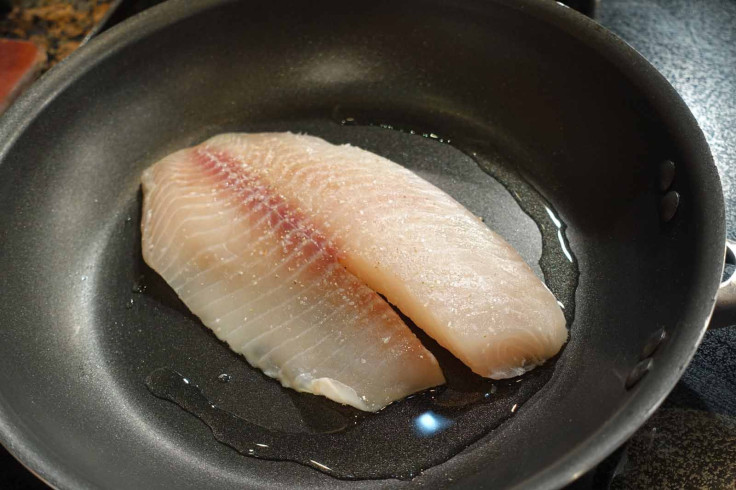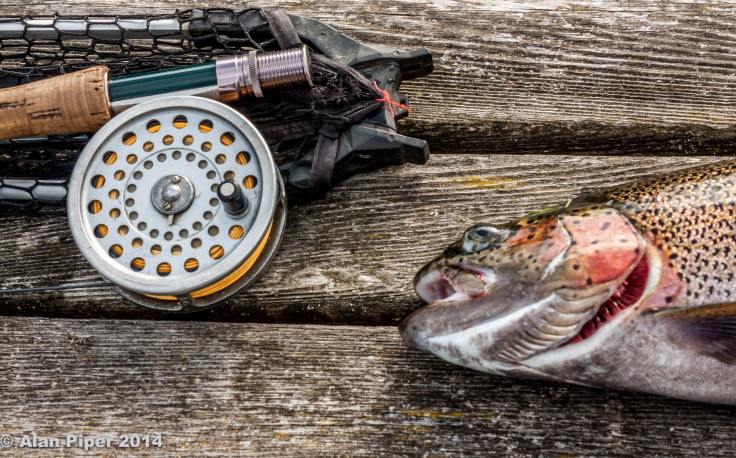Nutritional Breakdown For 6 Types Of Fish To Eat, From Farmed To Wild

The oceans are teeming with 32,000 different types of fish full of nutrients, but not all of them contain the same benefits and, for some, there are health hazards. Consumers, therefore, have to become increasingly wary of, not only what they eat, but where it comes from.
Experts have raised concerns about farm-raised fish versus wild free swimming fish. Farm raised fish are raised on unnatural diets, crammed into small enclosures that are prone to breeding disease, and are fed large quantities of antibiotics to fight off contamination. Approximately 86 percent of the seafood Americans consume is imported from other countries, half of which is farmed, according to the National Oceanic and Atmospheric Administration.
Understanding where fish comes from helps determine its quality of nutrition. Cold water oily fish, for example, contains the highest amounts of omega-3 fatty acids EPA (eicosapentaenoic acid) and DHA (docosahexaenoic acid). Both EPA and DHA are strongly correlated with cardiovascular disease prevention. DHA is especially important for brain and vision development in infants, and since omega-3 fatty acids can pass along to babies through breast milk, it makes it a valuable food source for a mother to incorporate into her diet. Most adults need between 5 to 7 ounces (oz) of protein each day, including 8oz of fatty fish rich in omega-3s.
Certain fish, especially the larger predator at the top of the food chain, contain high levels of methyl-mercury. It’s a potent neurotoxin particularly damaging to a young, developing brain that has been shown to cancel out the brain-boosting powers of fish oil. Mercury can also be passed to babies through breast milk, making it a particular concern for pregnant women and their young children. For most adults, health benefits outweigh potential risks of mercury contamination. However, pregnant women should steer clear of high-mercury fish like swordfish, shark, king mackerel, and limit albacore tuna.
For those who aren’t fond of how fish taste or want to avoid consumption for other reasons, fish oil supplements is an option. Choose supplements that contain EPA and DHA to reap the health benefits without the risk of mercury overload. For vegans, certain types of seaweed can deliver the EPA and DHA they need to sustain a healthy brain and body. Seafood lovers standing in front of the big glass window of their fish market may be overwhelmed by the choices, which is why we’ve put together a rundown of the pros and cons of some of the most frequently eaten fish in America.
Top Fish Nutrition Breakdown
Farmed Salmon

Americans are eating salmon at a higher rate every year, but most of it is Atlantic salmon, which is always farmed. Most of it is harvested from Chile, Canada, and Norway. Salmon is packed with approximately 2,400 milligrams (mg) of omega-3s in one 4-oz filet. It’s very low in mercury, whether it’s farmed or wild, but there are some serious downsides to the farmed version.
In a 2004 study, researchers analyzed the chemicals in 459 samples of salmon from five different countries and found most of the fish were “polluted” with PCBS. They later learned the fish were so full of the industrial chemicals because their fishmeal was contaminated across the board. Since then, the PCB levels have been cut in half thanks to replacing fishmeal with soy protein. Bottom line: If you’re going to go with farmed salmon, which is typically less expensive than wild salmon, go with salmon farmed in the United States or salmon that was raised in “recirculating aquaculture systems” or “tank systems,” the newest most efficient controlled environment for fish farming.
Wild Salmon

Salmon from the natural waters of the world have the highest concentrations of omega-3 fatty acids at 1,500mg per 4oz piece of a cooked filet. Canned is usually wild and contains about 1,200mg per 4oz serving. Omega-3s are those polyunsaturated fats that have been known to promote cardiovascular health, making wild salmon the go-to if you’re looking for heart healthy benefits. Unfortunate for consumers, wild Alaskan salmon can cost more than twice as much as farmed salmon and is available only during the summer. If you can’t find wild salmon from Alaska, go for any type of wild salmon from California, Oregon, or Washington state.
Canned Tuna

Canned tuna is a convenient way to consume protein with a relatively high amount of omega-3s (between 150 and 300 mg in a 4-oz can of light tuna and 1,000 mg in albacore tuna). However, tuna is high in mercury, which is why canned tuna, although easy to grab out of the cabinet for lunch, shouldn't be eaten on a regular basis. Mercury at high rates can damage nerves, leading to memory loss, irritability, and balance problems over time. According to the FDA, each week it’s safe to ingest 7 micrograms (mcg) of mercury for every 22 pounds you weigh, which calculates to 50 mcg for a 150-pound person.
Tuna caught by trolls and polls off of boats is typically the safest type of tuna to buy, Canned tuna brands like Wild Planet and Raincoast Trading are among the preferred types by the Center for Science in the Public Interest.
Tilapia

As the fourth most popular seafood in America, tilapia is an inexpensive and generally mild tasting white fish with a modest amount of omega-3s at 150 (mg) in one 4-oz piece. Most of it comes from China, Indonesia, Ecuador, and Honduras. Tilapia are also very low in mercury and survive on a vegetarian diet.
The safest bet is going with tilapia that’s been tank-farmed in the U.S. or Canada, because those farmed from China and Taiwan are on the Food and Drug Administration’s import alert watch list. The FDA inspects about 2.7 percent of food imported into America, and only an estimated 0.1 percent of all imported seafood products, which is why choosing domestic tilapia has become increasingly important over the years as manufacturers continue to raise farmed fish that go largely untested.
Trout

Trout are high in omega-3s, with about 1,000 mg in a 4-oz cooked piece. They’re low in mercury, but most trout that are farmed are raised in closed, man-made waterways. Because of the close proximities, there is substantial concern about feed and feces polluting the ocean. Fish escaping captivity and breeding with wild fish is also a concern because of the antibiotics they carry with them could transfer into the open environment.
Rainbow trout farmed in the United States, especially from Minnesota waters of Lake Superior, are safe. Wild lake trout from Lake Huron, Lake Michigan, and Canadian and Michigan waters is a good alternative if you can’t find rainbow trout. However, toxicologists recommend avoiding wild lake trout from Wisconsin’s waters of Lake Superior because the waters are highly polluted.
Catfish

Catfish is a thin, flakey fish that’s often fried and served in the south. As far as farming is concerned, it’s one of the most sustainable fish available, so you don’t have to feel guilty eating it (if you don’t eat it fried). It has a modest amount of omega-3s, between 100 to 250mg in a 4oz cooked piece and is low in mercury. Because it’s fed a vegetarian diet, it’s less likely to accumulate harmful chemicals. If you’re going to eat catfish, try to go for ones farmed in the U.S. because the FDA has placed catfish farmed from China on the watch list after finding illegal chemical residues. When the FDA finds repeated violations, it issues an “import alert,” which allows inspectors to block shipments from coming into America.
Published by Medicaldaily.com



























